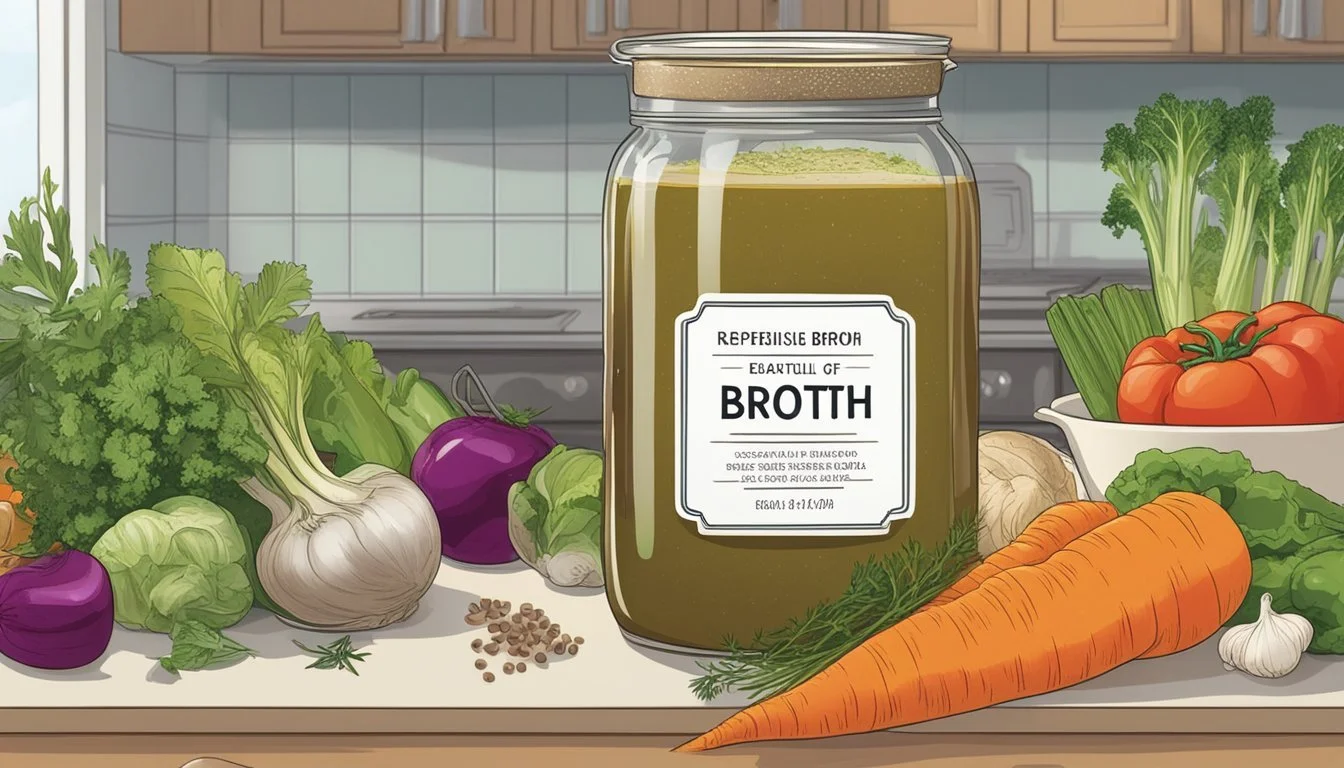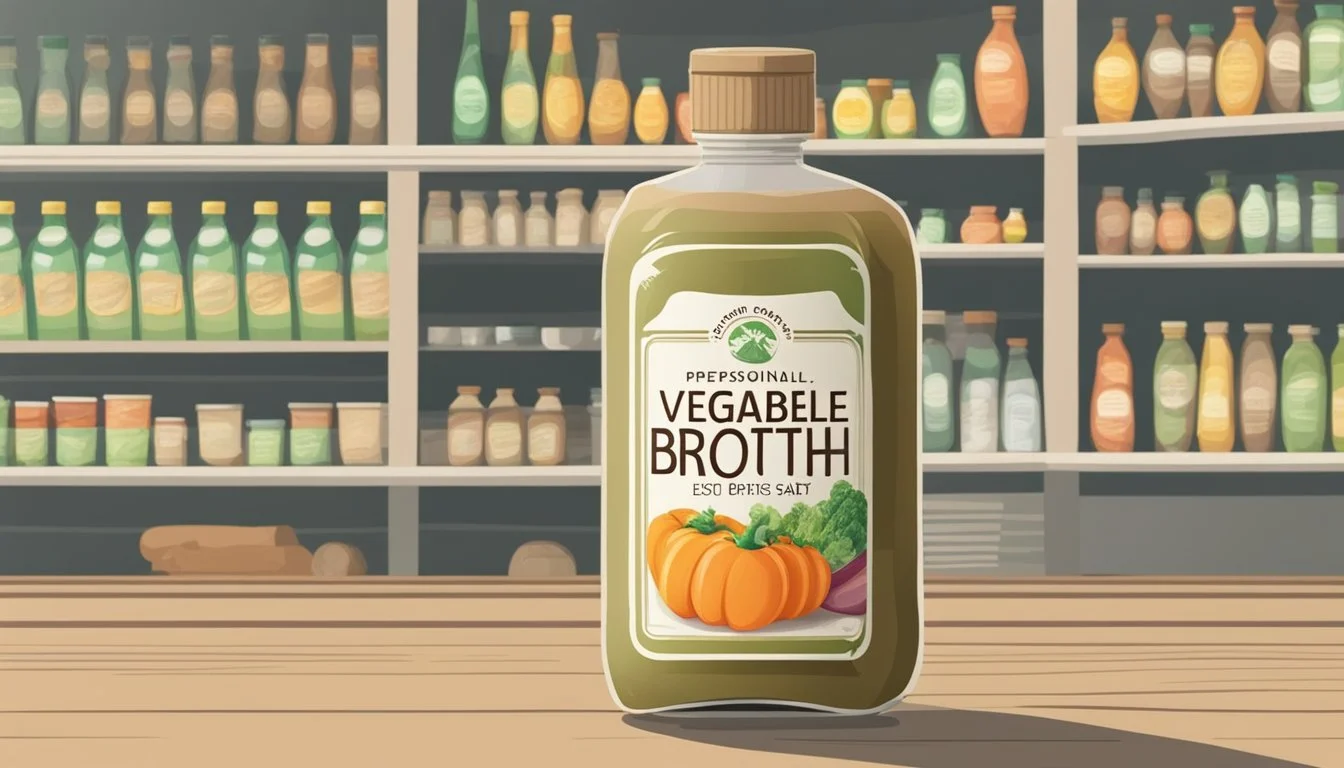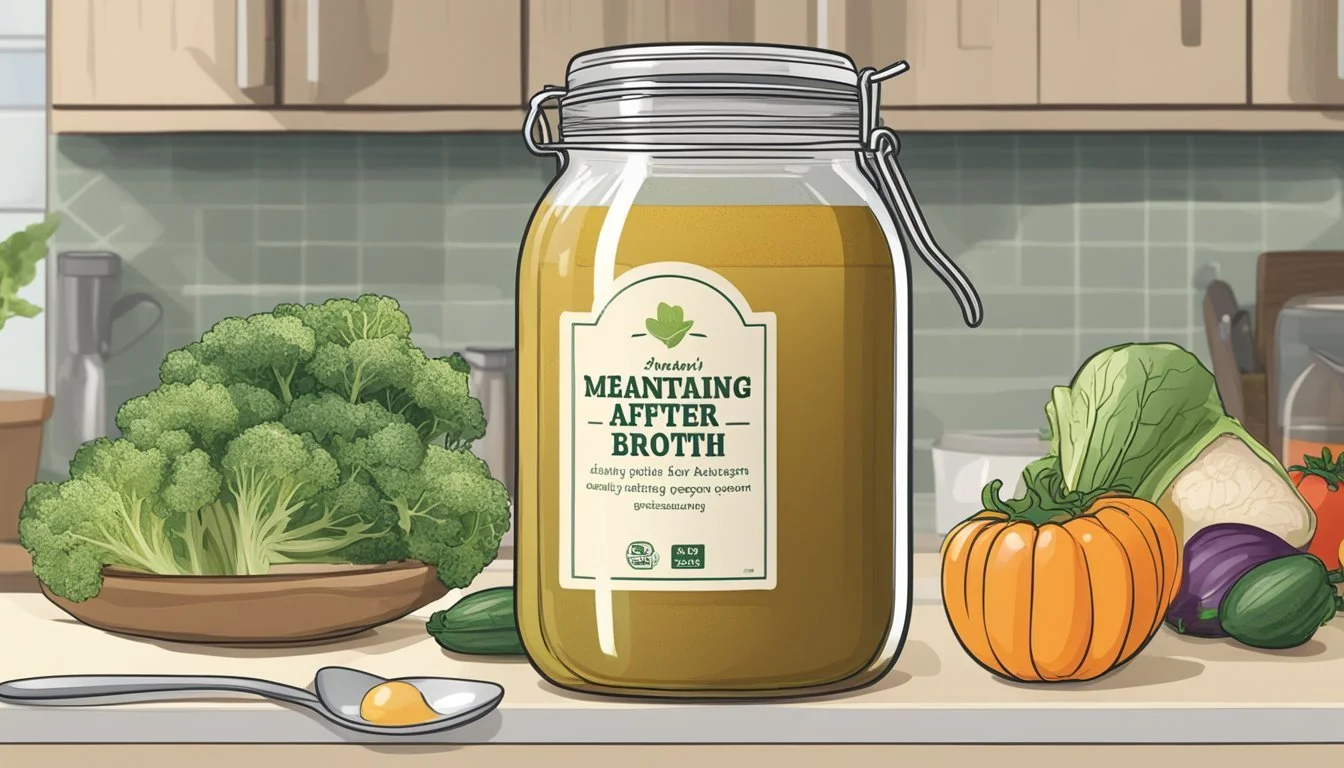Does Vegetable Broth Go Bad?
Shelf Life and Storage Tips
When considering the shelf life of vegetable broth, one of the key questions is whether it goes bad. Vegetable broth, whether store-bought or homemade, doesn’t last forever. Opened store-bought vegetable broth generally lasts up to 5 days in the fridge before it starts to spoil.
Unopened cartons of vegetable broth typically remain safe to use for 1 to 3 months beyond their best-by date when stored properly in a cool, dry place. Once opened, it’s essential to store the broth at or below 40°F to maintain its quality. Identifying signs of spoilage, such as mold, off odors, or odd tastes, is crucial for ensuring the broth's safety.
Even unopened, vegetable broth will eventually lose its quality if left for too long. Proper storage and attention to expiration dates can help extend its usability. This article will guide readers through the specifics of storing vegetable broth, recognizing spoilage, and maximizing its shelf life.
What Is Vegetable Broth?
Vegetable broth is a liquid made by simmering vegetables and herbs in water. It is used as a base for soups, sauces, and other dishes, imparting a rich, savory flavor.
Components of Vegetable Broth
Vegetable broth typically includes a variety of ingredients that contribute to its flavor and nutritional value. The primary vegetables commonly used are onions, carrots, celery, and garlic.
Onions act as a flavor base, providing a sweet and savory note. Carrots add mild sweetness and a vibrant color. Celery contributes an aromatic earthiness, while garlic offers pungency.
To enhance the complexity of the broth, herbs like parsley, thyme, and bay leaves are frequently included. These herbs add depth and a fragrant aroma to the broth. For homemade vegetable broth, other vegetables like leeks, parsnips, and tomatoes might be added.
Ingredient Role Onions Sweet and savory flavor base Carrots Adds sweetness and color Celery Adds earthiness Garlic Pungent flavor Parsley Fragrant, adds depth Thyme Enhances complexity Bay Leaves Adds fragrance and flavor complexity
Nutritional Profile of Vegetable Broth
Vegetable broth carries essential vitamins and minerals derived from its ingredients. The nutritional value can vary depending on the specific vegetables used.
Typically, vegetable broth is low in calories, making it an excellent option for those monitoring their calorie intake. It is rich in vitamins A and C, especially when carrots and parsley are included. Minerals like potassium, calcium, and magnesium are present, aiding in various physiologic functions.
Additionally, vegetable broth contains small amounts of dietary fiber and protein. The health benefits include hydration and potential anti-inflammatory properties due to the herbs. Store-bought vegetable broth might have added sodium, so it is advisable to check the labels if salt intake is a concern.
Homemade vegetable broth provides the opportunity to control all ingredients, ensuring no unwanted additives and a fresher taste.
Understanding Expiration Dates
Understanding the nuances between different types of date labels is crucial for maintaining food safety and quality. Learning how to read these labels accurately can prevent food waste and possible health risks.
Expiration Date vs. Best By Date
Expiration Date: This is the final day that the manufacturer guarantees the product’s safety and full potency. Consuming the product after this date can pose health risks.
Best By Date: This date indicates when the product will be at its peak quality in terms of flavor and texture. It's not necessarily safety-related but more about the optimal freshness.
Best if Used By and Best When Used By often appear on labels as a more consumer-friendly term for the same concept.
Understanding these distinctions helps ensure food is safe to consume and used at its best quality.
How to Read Labels Accurately
Labels on vegetable broth packages provide vital information regarding product safety and quality.
Locate the Date: Look for the expiration or best by date, usually found on the top or side of the carton or can.
Check Storage Instructions: Ensure you store the broth as advised. Most unopened cartons should be kept in a cool, dry place.
Examine the Condition: Verify the packaging integrity. Signs of damage or bloating indicate potential spoilage, regardless of the date.
Reading labels correctly ensures you make informed decisions about the food's usability, keeping health risks and waste to a minimum.
Storage and Shelf Life
The longevity of vegetable broth depends on whether it is opened or unopened and how it is stored. Proper storage conditions can significantly extend its shelf life.
Unopened Vegetable Broth
Unopened vegetable broth can last for a long time when stored correctly. Store-bought vegetable broth typically has a shelf life of 1 to 2 years. Some brands may extend up to 3 to 5 years if kept in a cool, dry place. Look for the "Best by" or "Use by" date on the packaging, which can serve as a guideline.
Optimal Storage: Keep unopened vegetable broth in a pantry or a dark cupboard at a stable temperature. Avoid exposure to direct sunlight and heat sources, which can degrade the product's quality over time.
Opened Vegetable Broth
Once vegetable broth is opened, its shelf life drastically shortens. Store-bought vegetable broth that has been opened usually lasts for 3 to 4 days in the refrigerator. Homemade vegetable broth can also be kept for about 4 to 5 days under the same conditions.
Refrigeration: Make sure to store opened vegetable broth in an airtight container to prevent contamination and loss of flavor. The broth should be kept at a temperature between 32-40°F (0-4°C) to maximize freshness.
Optimal Storage Conditions
Proper storage is crucial for maintaining the quality and safety of vegetable broth. Use airtight containers to avoid exposure to air and contaminants. For opened broth, refrigeration is essential. A cool, dry, and dark place is ideal for storing unopened broth.
Freezing: For longer storage, freezing vegetable broth is an excellent option. Freeze the broth in airtight containers or freezer bags. Thaw frozen broth in the refrigerator and use it within 3 to 4 days after thawing.
To summarize, storing vegetable broth correctly can extend its usability and prevent waste. Unopened, it keeps best in a pantry, while opened broth demands refrigeration. Ensure airy storage and proper temperatures to maintain its freshness.
Signs of Spoilage
Identifying when vegetable broth has gone bad is crucial to avoid potential health risks. Key indicators include changes in appearance, smell, taste, and texture.
Visual Clues
A visual inspection is often the first step. Look for mold growth, which appears as dark or fuzzy spots on the surface. Any visible mold is a clear sign to discard the broth immediately.
Cloudy or discolored broth also suggests spoilage. Fresh vegetable broth should be relatively clear and not have any unexpected changes in its color. A shift towards darker hues or opacity often indicates bacterial activity or contamination.
Changes in Smell and Taste
The smell can be a telltale indicator. If the broth has an off odor, such as a sour or yeasty smell, it has likely spoiled. Fresh vegetable broth typically has a mild, pleasant aroma. An unpleasant smell suggests fermentation or other spoilage processes at work.
When it comes to taste, sourness or any unusual flavors indicate degradation. Even if it looks fine, a strange taste means it’s safer to throw it away to avoid potential foodborne illnesses.
Texture Alterations
Changes in texture are also important signs. Fresh broth should be smooth and free-flowing. A slimy or thick consistency suggests microbial growth or prolonged oxidation, which compromises safety and quality.
Inspect the broth by pouring it into a transparent container. If it coats the sides of the container or feels slippery, these are signs of spoilage. Maintaining proper storage conditions can help prevent these textural changes.
Freezing and Thawing Vegetable Broth
Freezing vegetable broth can extend its shelf life significantly, but it requires careful handling to preserve quality. Proper defrosting techniques are also crucial to maintain safety and taste.
How to Freeze Vegetable Broth Effectively
To freeze vegetable broth effectively, make sure it has cooled completely before transferring. Use airtight containers or freezer bags to minimize exposure to air. Label each container with the date to keep track of its age.
Portioning the broth into smaller quantities can be helpful. This way, you defrost only what you need. Ensure that there is some headspace in the containers as the broth will expand.
For best quality, use frozen vegetable broth within six months.
Defrosting Techniques
Defrosting vegetable broth correctly is crucial to maintain its safety and taste. The safest method is to move the frozen broth to the refrigerator and let it thaw overnight. This slow thawing process ensures the broth remains at a safe temperature.
For a quicker option, place the container in a bowl of cold water. Change the water every 30 minutes until thawed. If you're in a hurry, you can also defrost the broth in a microwave, using the defrost setting. Stir frequently to ensure even thawing.
Once defrosted, use the broth within 3 to 4 days and do not refreeze.
Using Vegetable Broth in Cooking
Vegetable broth is a versatile ingredient that can enhance the flavor profile of many dishes. It adds depth to soups, stews, and other recipes without overpowering other ingredients.
Incorporating Broth into Recipes
Vegetable broth can be used as a base for various soups and stews. When cooking, it acts as an excellent substitute for water, infusing meals with extra flavor.
For creamy soups, starting with a vegetable broth provides a delicious foundation. Popular choices include root vegetables like carrots, potatoes, and onions. For lighter soups, vegetable broth paired with seasonal vegetables works well.
Vegetable broth is also ideal for cooking grains such as rice, quinoa, or couscous. This not only enhances their taste but also adds nutritional value. Use it in sauces and gravies for an enriched taste.
Adjusting for Flavor and Consistency
Adjusting broth for flavor and consistency is crucial in cooking. To deepen the flavor, add aromatics like garlic, onion, or herbs during the simmering process. For a richer taste, consider adding a small amount of tomato paste or soy sauce.
If the broth is too strong, dilute it with water to reach the desired taste. To thicken broth, reduce it by simmering until it reaches the right consistency. Alternatively, a small amount of cornstarch or flour can be used as a thickening agent.
For lighter dishes, ensure the broth does not overshadow other ingredients. Balance is key, so tasting and adjusting seasoning as needed is important. This ensures that the broth complements without overpowering.
Potential Health and Safety Concerns
Vegetable broth, if not handled correctly, can pose various health and safety concerns. Key points include the impact of preservatives and additives, and the risks associated with consuming spoiled broth.
Preservatives and Additives
Commercial vegetable broth often contains preservatives and additives to extend shelf life. Preservatives can include substances like sodium benzoate and citric acid. These ingredients help inhibit bacterial growth and oxidation, maintaining product safety.
Some additives are used to enhance flavor and appearance. While generally recognized as safe by food authorities, excessive consumption of additives may have long-term health effects. It is important to read labels and be aware of what is included in the broth.
Risks of Consuming Spoiled Broth
Spoiled vegetable broth poses significant health risks. Signs of spoilage include unusual odors, discoloration, and bloating of packaging. Consuming spoiled broth can lead to foodborne illnesses.
Bacteria such as Salmonella and Escherichia coli can thrive in spoiled broth, causing symptoms like nausea, vomiting, and diarrhea. Proper storage is crucial. Once opened, vegetable broth should be refrigerated and used within five days to minimize risks.
Be vigilant about checking expiration dates and packaging integrity to ensure health safety.
Maintaining Quality After Opening
After opening a container of vegetable broth, ensuring its quality involves a few essential steps.
Proper Storage: Store opened vegetable broth in the refrigerator. Keeping it between 32°F and 40°F helps maintain its flavor and consistency. Use airtight containers to prevent exposure to air and contaminants.
Shelf Life: Opened vegetable broth typically remains fresh for 4 to 5 days. Beyond this period, it may start to lose quality, impacting both its flavor and consistency.
Signs of Spoilage: To check if the broth is still good, look for an off odor, strange flavor, or any mold growth. If any of these signs are present, discard the broth immediately.
Preservation Tips:
Use Clean Utensils: Always use clean spoons or ladles when scooping broth to avoid introducing bacteria.
Freeze for Longer Storage: If you can't use the broth within 5 days, consider freezing it. Use freezer-safe containers or ice cube trays for portion control. Frozen broth can last for several months without losing much of its quality.
Consistency Checks:
Upon opening, the broth should be clear or slightly cloudy but free from any lumps or sediment.
If the texture becomes gelatinous or slimy, it is a sign of spoilage.
By following these guidelines, you can maintain the quality of your vegetable broth after opening, ensuring it remains safe and flavorful for your dishes.





